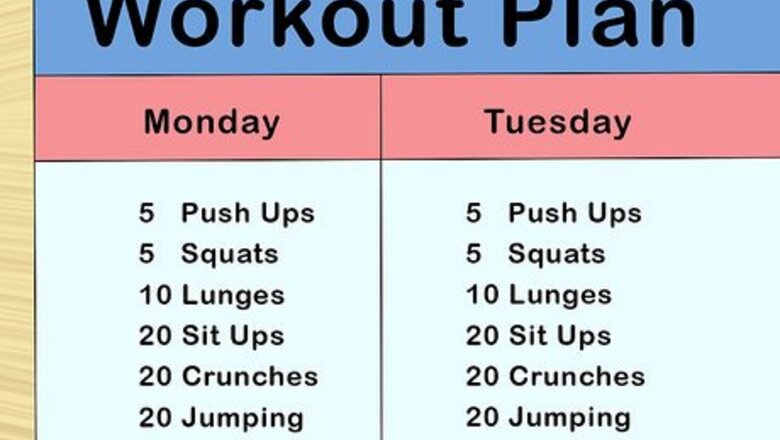
views
Staying in Shape
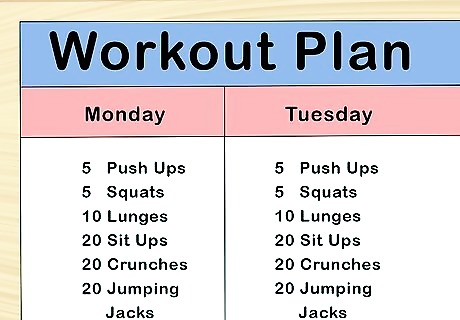
Develop a workout plan based on your experience. If you're a relative beginner, start off by working out three days a week, and add a fourth over the course of a few weeks. Spread your most intense workouts out over the week so you'll have plenty of recovery time. If you're more experienced, you can stick to a more demanding, five or six day schedule. It's best to check with your doctor before starting a new exercise routine, especially if you're a teenager (with growing muscles and bones), or if you have any chronic medical conditions. A personal trainer can help you come up with an exercise program based on your goals and level of experience.
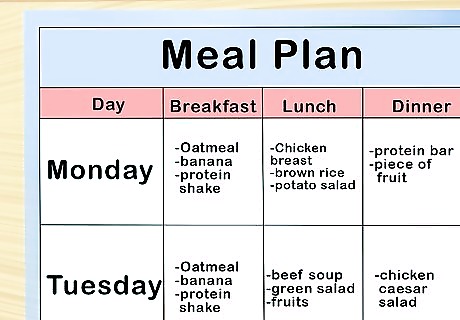
Keep track of what you eat. Plan your meals, control your diet year-round, and keep track of how many calories you consume daily. Your needs will depend on your age, sex, and fitness goals. Monitor factors like your weight, body fat percentage, and strength gains, and adjust your diet accordingly. For example, if you want to reduce your body fat percentage, stick to healthy fats like olive oil and omega-3 fats (salmon and halibut are great sources), and add a cardio day to your schedule.
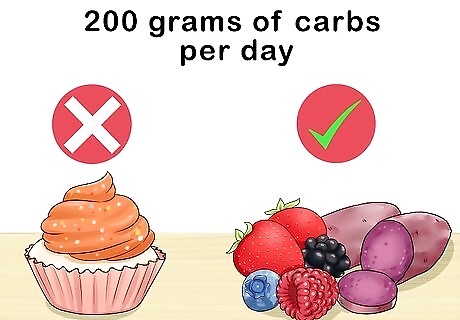
Don’t cut nutrients when you cut calories. Don’t forget nutrients when you’re counting numbers like calories, protein, and carbs. Reducing calories gradually is necessary to sustain the fat burning that makes muscles visible, but don’t lose sight of your overall health. If you’re allowed a set amount of a type of food, meet that requirement with a rich source of nutrients. For example, if you’re allowed 200 grams of carbs per day, don’t squander them on sweets that contain no nutrients. Instead, go for nutritious carbs like potatoes or berries. Don’t rely on multivitamins, and don't make skipping meals a habit.
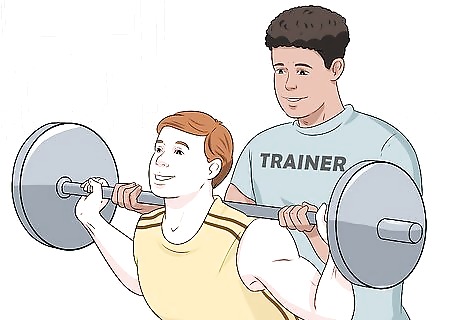
Get a professional trainer. There’s only so much you can accomplish without learning from an experienced trainer. When you’re just starting off, work out with a trainer at your gym. As you break into professional modeling, get a trainer who has experience with your area of focus. For example, competitions and print require different physiques. If you compete regularly, you’d want a trainer who can help you achieve and sustain a contest-ready shape. Even if you’ve achieved a good physique on your own, a trainer can help you set your goals even higher.
Marketing Yourself
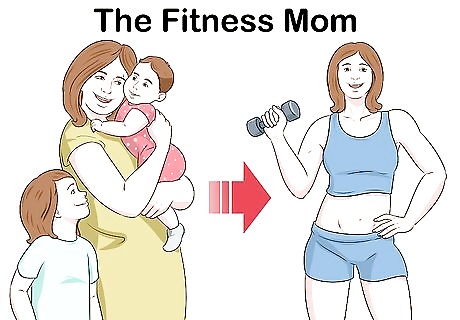
Figure out your brand. Decide what motivates you, makes you stand out from the crowd, and defines you as a fitness model. For instance, perhaps you’ve built your physique after having several children, or overcame a struggle through fitness. Your day job could help define your brand, too. Fitness magazines often use yoga instructors or personal trainers instead of standard fashion models. An instructor or trainer is more likely to execute a technique precisely while looking good for the camera. Once you've come up with your brand, you'll know which type of physique you need. To focus on competitions, for example, you'll need a more built, defined physique than mainstream magazine work.

Learn how to pose. Knowing how to pose properly is just as important as your appearance, so it’s a good idea to hire a modeling coach or take a modeling class. You could also look online and scour fitness magazines to learn how models pose. For example, you can watch videos of poses required by the National Gym Association. You can also search for images online or look for videos on YouTube. Practice different poses in front of the mirror to figure out what works best for your body.
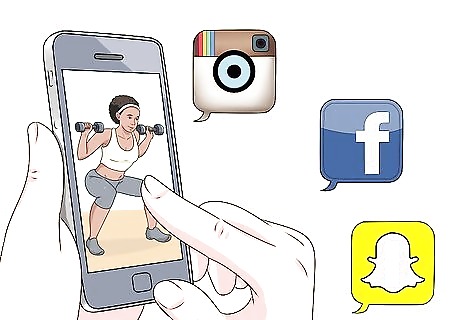
Get active on social media. Set up Instagram, Facebook, and Snapchat profiles and update them daily. Engage your followers by tracking your fitness journey, giving workout and meal prep tips, and sharing stories about what motivates you. Follow people in the industry, from models to photographers, to build a professional network and, hopefully, get discovered by a scout or sponsor.
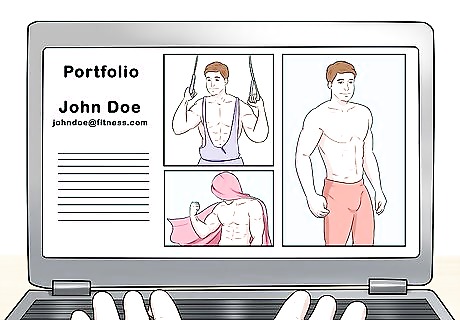
Create a portfolio. When you’re just starting out, creating a portfolio can be as simple as having a friend take snapshots of you in good natural lighting. A beginner’s portfolio should include 6 to 12 shots, and try to get as close to professional quality as possible. Once you start booking gigs, include published shots in your portfolio. You don’t have to start assembling your professional portfolio until after signing with an agent and booking gigs. However, you will need up to date photographs of yourself to send to agencies and magazines. Fitness models will need to include body shots. Women should wear a sports bra and shorts, and men should wear only shorts.
Breaking into the Industry
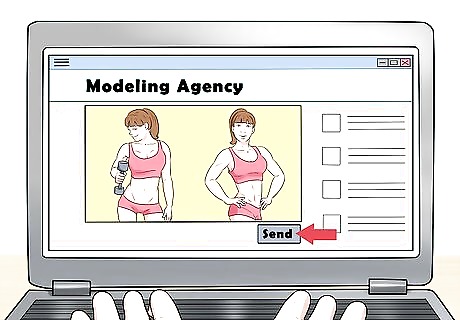
Send your photos to modeling agencies. Submit your photographs to modeling agencies to find professional representation. Your agent will help you develop a professional portfolio, alert you about job opportunities, and help match you with the right jobs. You might not be able to immediately land a contract with a major agency like Wilhelmina, so cast a wide net and submit photos to smaller agencies. Search online for agencies that represent fitness models. Check out the social media profiles of fitness models at various career levels to get a feel for which agencies represent established and emerging models. Many agencies periodically hold open calls, so search online regularly for open call opportunities in your area.
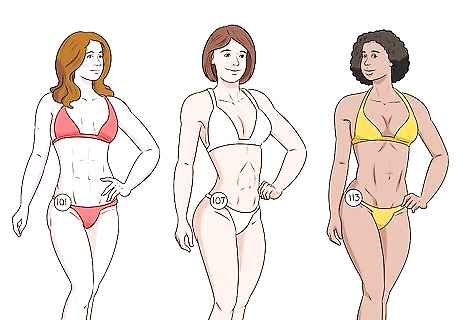
Enter fitness or figure competitions. Bodybuilding and bikini competitions are a popular way of gaining recognition. They’re great for networking, and can offer opportunities for you to meet scouts and product sponsors. Look online for competitions in your area, and give yourself a few months to get in contest-ready shape. Just keep in mind a contest-ready physique might not be what a mainstream magazine defines as marketable, especially for female models.

Do your research before signing any contracts or releases. Steer clear of an agency that requires you to pay for any service. An agent is entitled to a commission, which is generally between 10 and 20 percent of your earnings. Even though you might feel hesitant to assert your rights when you’re just starting out, try to handle your business with confidence. When signing a release with a magazine or photographer, negotiate restrictions such as, “Photos may not be used on sexually explicit or pornographic websites or publications,” or “Finished photographs may not be used to subject the talent to scandal, scorn, ridicule, or indignity.” If you know someone with legal expertise or have a lawyer, ask them to read any contract or release before you sign it.

Look out for modeling scam red flags. In addition to asking for money up front, an illegitimate agency might make unrealistic promises of fame and fortune. Reputable agencies almost never approach someone out of the blue, so be skeptical of anyone who comes up to you and says they can make you a model. Look up an agency online to verify their credibility. Some scams use names similar to well-known agencies. For example, Wilhelmina is a leading agency, but steer clear if an agent from Wilhelmina contacts you.
















Comments
0 comment